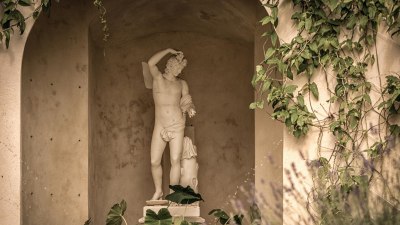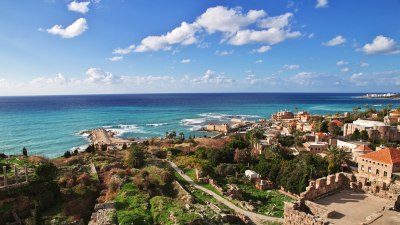Why Historic Landmarks Are More Than Just Photo Opportunities
Explore the rich narratives behind historic landmarks that offer more than just stunning visuals.

In our contemporary world, historic landmarks serve as significant markers of cultural identity and history, often attracting countless visitors eager to capture the perfect shot. However, to view these sites solely as photo opportunities is to overlook their deeper significances. Historic landmarks are woven into the fabric of our collective memory, representing the triumphs, tragedies, and evolving narratives of communities over time.
First and foremost, historic landmarks are tangible connections to our past. They stand as living evidence of the socio-political, economic, and cultural developments that have shaped societies. For instance, the Colosseum in Rome is not just a stunning architectural feat; it is a testament to the grandeur of the Roman Empire and the complexities of gladiatorial combat that enchanted ancient audiences. Each stone tells a story, echoing the lives of those who walked its corridors long before us.
Moreover, landmarks often serve as public spaces for education and reflection. Museums, for example, are commonly housed in historically significant buildings, enabling visitors to engage deeply with the narratives contained within. The Louvre in Paris, once a royal palace, now hosts an extensive collection of art that narrates the evolution of human creativity. By situating art within a historical context, visitors gain insight not just into the artworks themselves but also into the eras that birthed them.
Historic landmarks often evoke powerful emotions and sentiments that resonate far beyond mere aesthetics. Consider the significance of sites such as the Auschwitz-Birkenau concentration camp in Poland. This somber location serves as a memorial for the millions who suffered during the Holocaust, prompting visitors to not only reflect on past atrocities but also to foster discussions about tolerance, human rights, and the importance of remembrance. This emotional engagement is a crucial aspect of experiencing historical sites; they prompt us to confront uncomfortable truths and encourage us to bear witness to history.
Furthermore, historic landmarks can stimulate local economies and foster a sense of community pride. When communities take pride in their historical sites, it often leads to preservation efforts and educational programming that benefit both locals and tourists alike. For instance, the revitalization of historic areas in cities can attract tourism, creating jobs and rejuvenating local businesses. The preservation of landmarks such as the Alamo in San Antonio, Texas, provides an opportunity for the local community to connect with their heritage while benefiting economically from tourism.
In addition, these landmarks often play a crucial role in cultural identity, embodying the spirit of the people and their traditions. The Great Wall of China is not merely a series of bricks and mortar but a symbol of national pride and resilience. Such landmarks act as unifying forces, bringing people together under a shared narrative that fosters a sense of belonging and cultural continuity, which is vital in an increasingly globalized world.
Historians, archaeologists, and anthropologists all delve into the past through these sites, working to uncover stories that may have been forgotten or untold. The preservation of ruins like Machu Picchu in Peru serves as a rich resource for understanding Incan civilization, revealing their technological advancements, agricultural practices, and societal structures. These scholarly explorations provide deeper insights into human civilization and inform contemporary societal progress.
Moreover, many historic landmarks have inspired artistic expression and creativity throughout the years. From literature to film, these sites have played muse to countless works of art that reflect the cultural narratives rooted in our history. For instance, the evocative images of the Taj Mahal have inspired poems, novels, and films, imbuing the architectural marvel with layers of meaning that extend beyond its physical form. Art created in response to these landmarks can encourage deeper connections with our history, linking generations through shared artistic expressions.
In today's digital age, social media platforms often influence how we engage with historic landmarks. While this can lead to a superficial approach towards experiencing these sites, it also holds the potential for raising awareness about their significance. When individuals share their experiences and insights on platforms like Instagram, they contribute to a broader cultural narrative that can inspire others to visit these places with a more profound appreciation for their history. The hashtags associated with landmarks can spark interest and curiosity in those who may not have considered visiting, broadening the audience and fostering appreciation for cultural heritage.
To truly honor historic landmarks, we must strive to engage with them beyond the lens of a camera. Meaningful encounters with these sites precipitate a deeper understanding of our shared humanity, serving as a reminder of both our capacity for greatness and the lessons learned from our darkest periods. Whether it’s through guided tours that delve into the historical significance, immersive educational programs that connect the past to the present, or community events that celebrate local heritage, the potential for learning and growth is immense.
As stewards of our shared heritage, we have a responsibility to ensure that these landmarks are preserved not only for their aesthetic value but for the stories they tell and the lessons they impart. Preservation efforts should focus on maintaining the integrity and authenticity of the sites, allowing future generations to engage with history in its truest form. This necessitates collaboration between government entities, local communities, scholars, and preservationists to sustain and protect our historic treasures.
In conclusion, historic landmarks are invaluable resources that offer profound insights into our past and place in the world. While they provide breathtaking views and photo opportunities, it is essential to delve deeper into their narratives and to appreciate the multifaceted roles they play in our collective experience. By recognizing the significance of these sites, we not only honor the individuals who came before us but also enrich our understanding of what it means to be part of humanity's ongoing story. Future generations will rely on us to preserve these landmarks so that they too can learn from these incredible spaces and continue to engage thoughtfully with our shared history.











